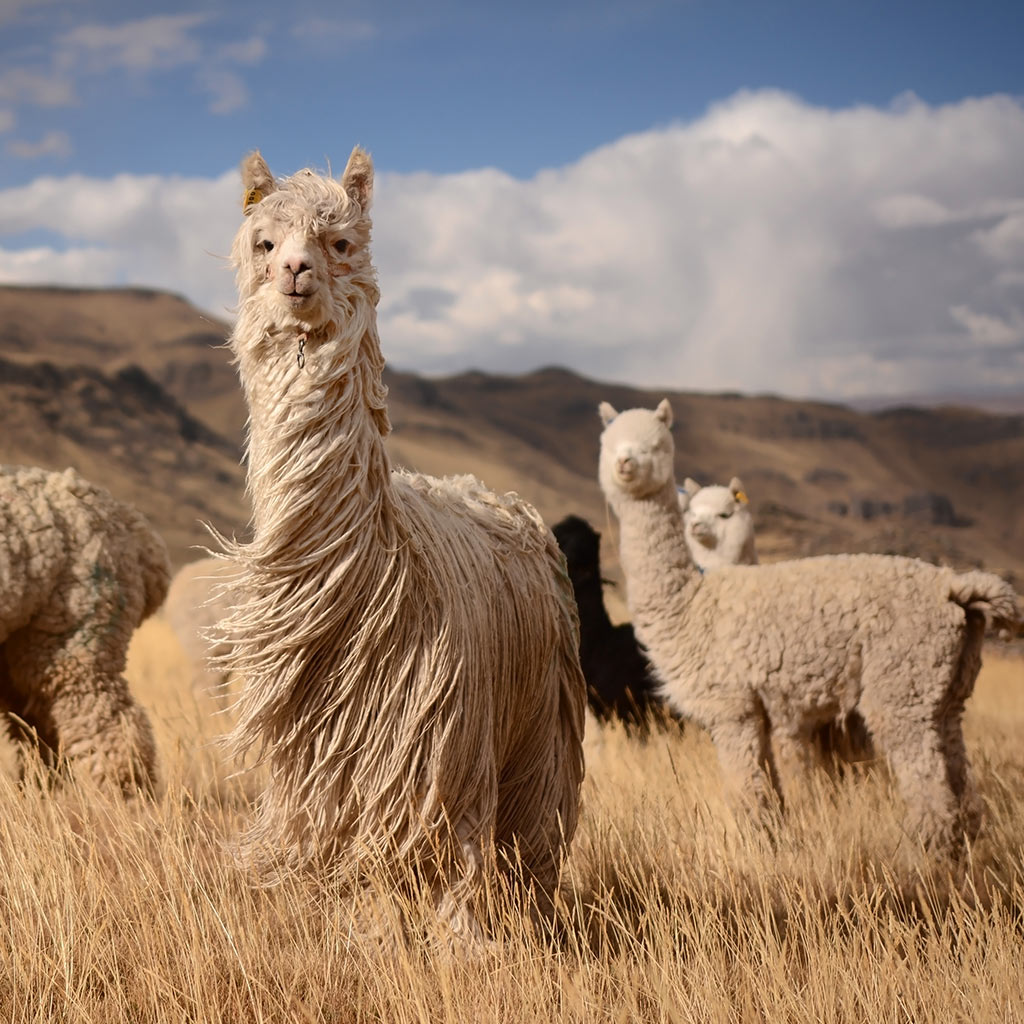

Hidden in the mists of the high Andes and antiquity, a mystical and almost magical little animal has journeyed over five millennia in partnership with man. To fully appreciate this remarkable history, consider the following:
And so it remained for another 2000 years, until the arrival in the New World of the Spanish conquistadors in the 17th century AD. As these soldiers of fortune began the orderly conquest and genocide of the Incan people, another casualty of their carnage was the little “humming sheep” so prized by their Incan enemy. The alpaca, which had been treasured for almost 4000 years as a source of highly prized fiber, was viewed only as a competitor for grazing lands allocated to the Spaniards’ sheep, and therefore most useful as a source of meat. This deliberate decimation of the great alpaca herds would have led to the eventual extinction of these magical little creatures except for one saving turn of fate. As the surviving Incans sought sanctuary in the highest reaches of their beloved Andes, they took a few of their most prized alpacas with them as they began their self-imposed exile into the mountains’ protective mists. In the centuries that followed, a much more hardy and healthy alpaca developed in the stern and demanding lands above the clouds, where survival of the fittest was an absolute and constant reality.
The curtain of history descended again on the alpaca and remained down until the mid 1800’s, when Sir Titus Salt of London “discovered” the remarkable fiber of this musical camelid and began promoting its use in the finest textile mills and fashion houses of Europe.
Even with this limited exposure to the outside world, the alpaca remained relatively unknown in the United States until 1983, when a small group of American importers began purchasing small numbers of these animals from select breeders in South America and bringing them to their farms as breeding stock.
Today, over three million alpacas exist worldwide, with 98 percent still located in Peru, Bolivia, and Chile. The alpaca herd in the United States is estimated at 17,000 and is expected to increase gradually in the next two decades.
As these amiable ambassadors of antiquity amble into their sixth millennium of partnership with their human owners, we wonder what new and exciting chapters will be written in their already amazing odyssey.
We can predict the following with a high degree of certainty:
All of the contents of this web site are the original property of Alpaca.com L.L.C. and may not be copied, downloaded, duplicated, or reproduced in any fashion without the express written consent of Alpaca.com L.L.C. Contents Copyright © 1995-2021 Alpaca.com L.L.C. and AlpacaNet L.L.C. All rights reserved.


